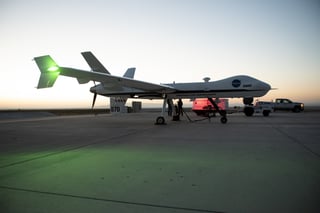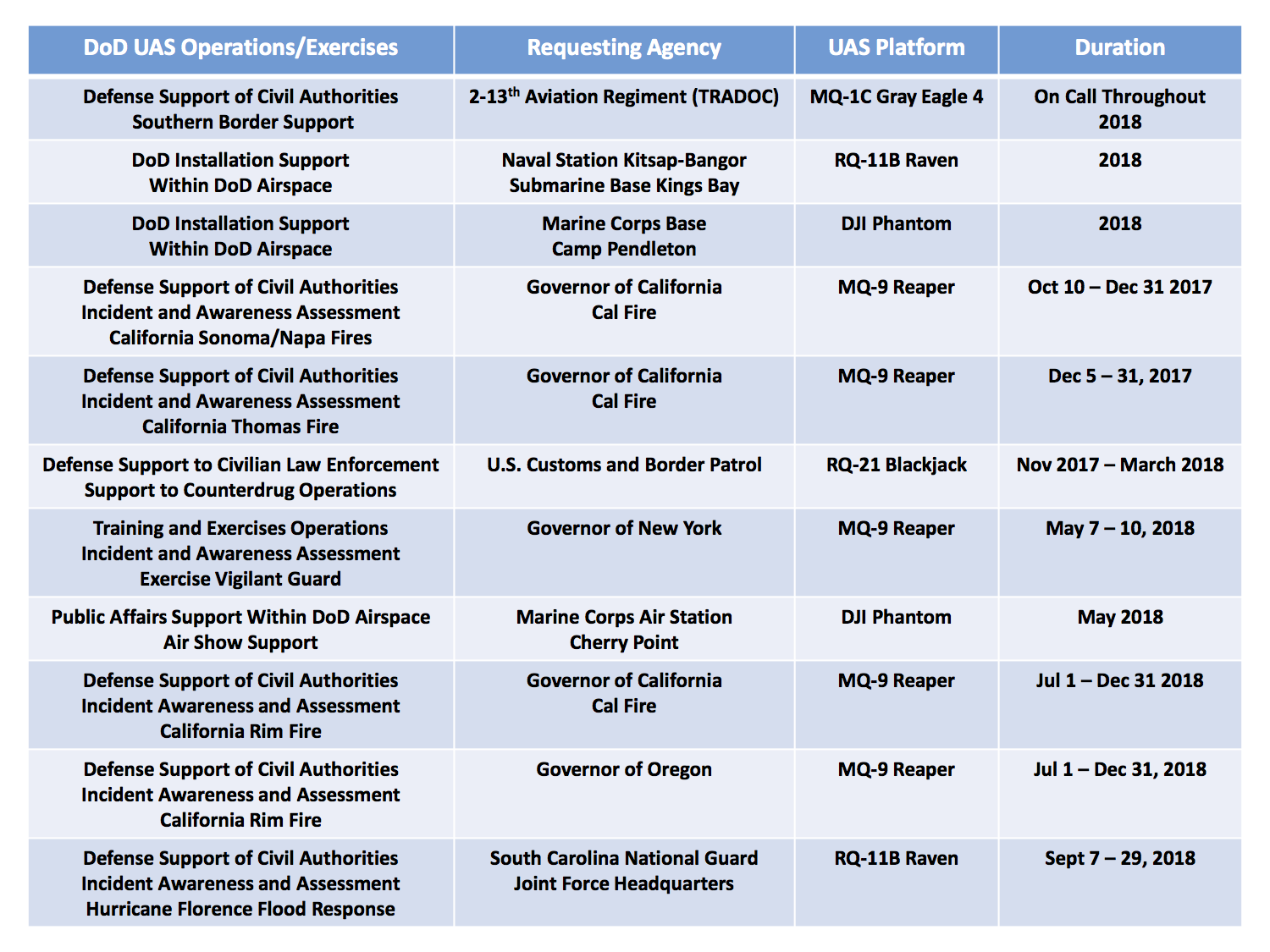According to the Phys.org article NASA flies large unmanned aircraft in public airspace without chase plane for first time:
Flights of large craft like Ikhana, have traditionally required a safety chase aircraft to follow the unmanned aircraft as it travels through the same airspace used by commercial aircraft. The Ikhana flew in accordance with the Federal Aviation Administration's (FAA) Technical Standard Order 211—Detect and Avoid Systems—and Technical Standard Order 212—Air-to-Air Radar for Traffic Surveillance.
[...] The Ikhana aircraft was equipped with detect and avoid technologies, including an airborne radar developed by General Atomics Aeronautical Systems, Inc., a Honeywell Traffic Alert and Collision Avoidance System, a Detect and Avoid Fusion Tracker, and an Automatic Dependent Surveillance-Broadcast capability – a surveillance technology where the aircraft determines its position via satellite navigation and periodically broadcasts this information so other aircraft can track it.
The flight took off from Edwards Air Force Base in California and entered controlled air space almost immediately. Ikhana flew into the Class-A airspace, where commercial airliners fly, just west of Edwards at an altitude of about 20,000 feet. The aircraft then turned north toward Fresno, requiring air traffic control to be transferred from the Los Angeles Air Route Traffic Control Center to the Oakland Air Route Traffic Control Center. On the return trip, the pilot headed south toward Victorville, California, requiring communication control to be transferred back to Los Angeles.
During the return flight, the pilot began a gentle descent over the city of Tehachapi, California, into Class E airspace—about 10,000 feet—where general aviation pilots fly. The pilot initiated an approach into Victorville airport at 5,000 feet, coordinating in real time with air traffic controllers at the airport. After successfully executing all of these milestones, the aircraft exited the public airspace and returned to its base at Armstrong.
"We are flying with a suite of sophisticated technology that greatly enhances the safety capabilities of pilots flying large unmanned aircraft in the National Airspace System," said Scott Howe, Armstrong test pilot. "We took the time to mitigate the risks and to ensure that we, as a program, were prepared for this flight."
Tuesday's flight was the first remotely-piloted aircraft to use airborne detect and avoid technology to meet the intent of the FAA's "see and avoid" rules, with all test objectives successfully accomplished.
At the end of the article:
More information: For more information on NASA's Unmanned Aircraft Systems Integration in the National Airspace System project, visit go.nasa.gov/2sx9VCn.
Question: While this was the "...first remotely-piloted aircraft to use airborne detect and avoid technology to meet the intent of the FAA's 'see and avoid' rules, with all test objectives successfully accomplished", (without a chase plane?) how rare is it for remotely-piloted aircraft to fly through US airspace where commercial or general aviation also flies without all those extra qualifications? Has this happened several times, several hundred, daily? Is it even more infrequent without a chase plane?
Click images for full size.
above left: "Aircraft maintenance crews at NASA‘s Armstrong Flight Research Center prepare the remotely-piloted Ikhana aircraft for a test flight June 12, 2018. The test flight was performed to validate key technologies and operations necessary for the Federal Aviation Administration's approval to fly the aircraft in the public airspace without a safety chase aircraft." Credit: NASA/Ken Ulbrich
right: "NASA’s remotely-piloted Ikhana aircraft, based at the agency’s Armstrong Flight Research Center, is flown in preparation for its first mission in public airspace without a safety chase aircraft." Credit: NASA/Carla Thomas



